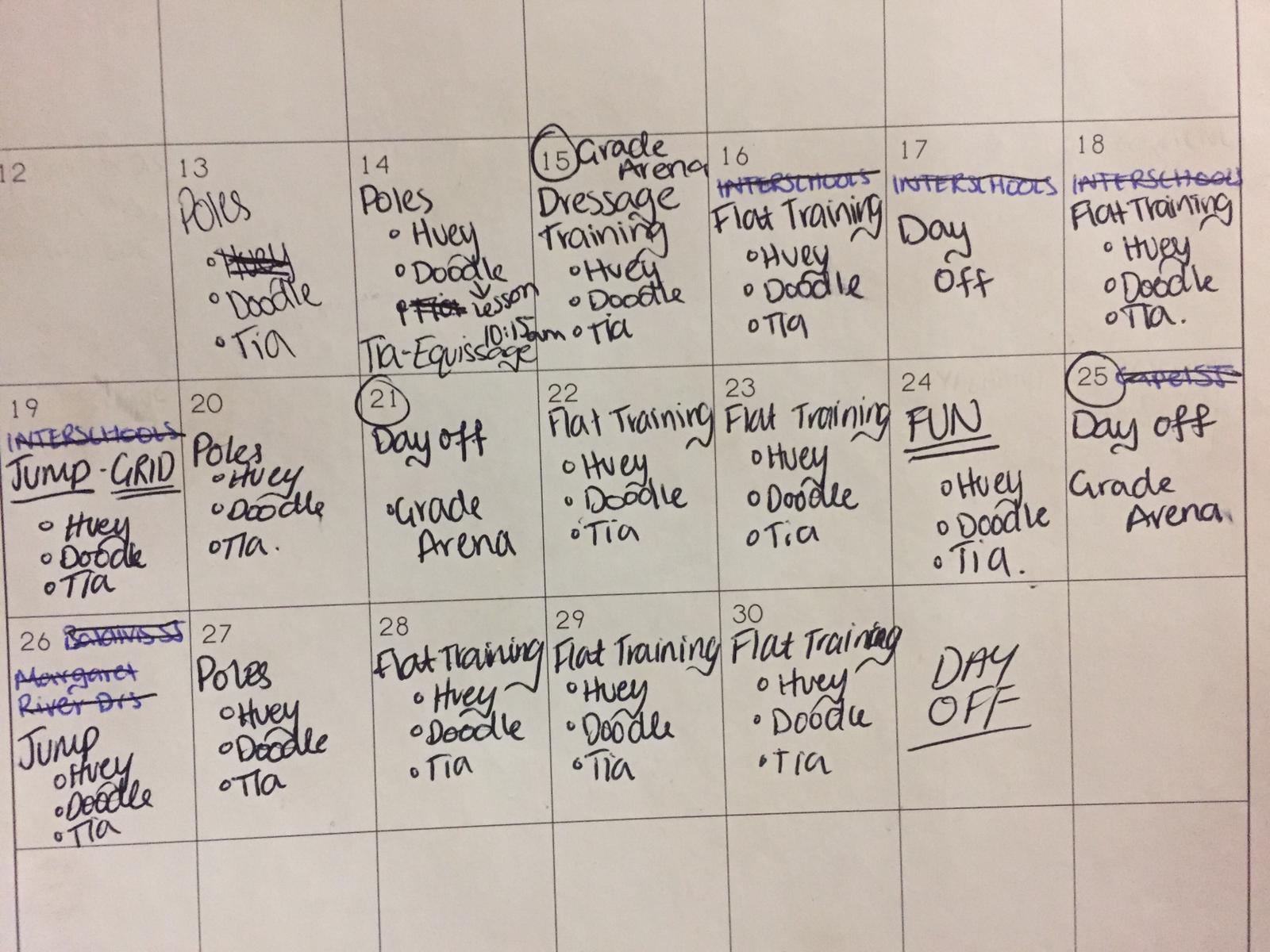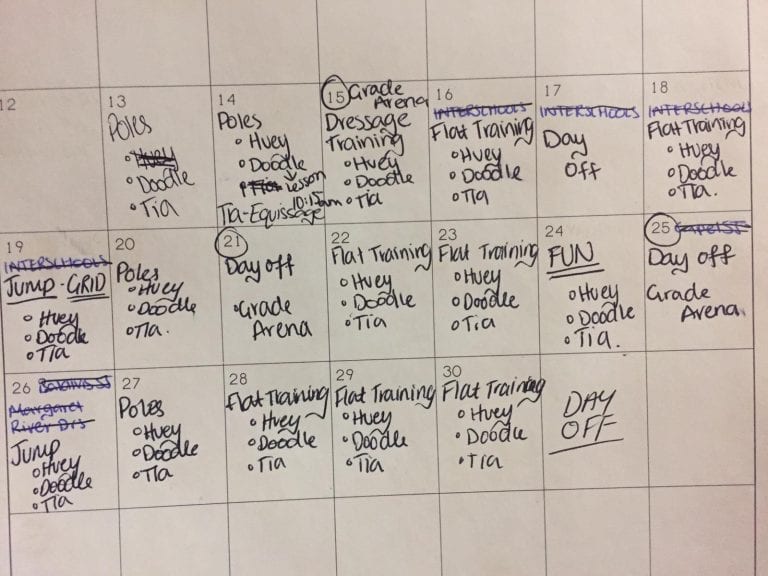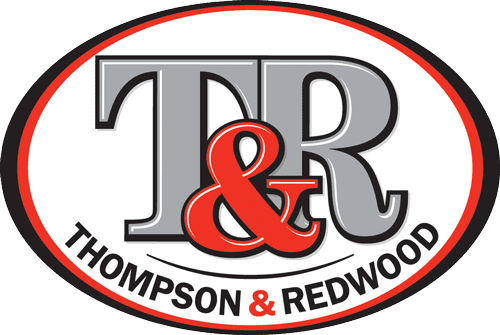
08 May Creating Training Schedules with Young Rider Chloe Gee
By Chloe Gee
With Covid-19 seeing the cancellation of competitions around the country, many riders are putting even more emphasis on training and working towards their riding goals. Young rider Chloe Gee has put together her guide on creating training schedules, using some tips from her mentors Amanda Ross and Emily Gray, to help keep you and your horse on track to reaching your goals.
Training Schedules...huh?
Most of you will have heard of ‘training schedules’ and some of you may even have created one
yourselves. They’re often seen amongst the very high level riders, where fitness and training is at
the top of their priorities.
But just because we’re not professional high-level riders, doesn’t mean its not important for us to have our own training schedules. Training schedules are done up weekly, monthly or even a few months at a time as a way of keeping track and planning how we train and how we need to go about getting our horses fit for certain events.
Just how important are training schedules?
Training schedules are really important and a great way to keep organised. 5-Star Event Rider and mentor Emily Gray says:
“Training schedules are important for success in any sport, but particularly in our sport where we have three phases to work on, and multiple athletes (rider and horse) to keep fit.”
Emily also explains:
“There is nothing worse than being unprepared for a competition – this leads to rider doubt before even arriving at the event, as well as an increased risk of injury and poor performances.’”
This is emphasised by how we all feel at the beginning of each year when we compete at the first event after the summer break. Usually we are all extra nervous for this first event as we begin to doubt wether we’ve done enough training and fitness work in the lead up to the competition after the summer break where our horses may have had a few weeks or months off.
So where do you start?
Start from the event and work backwards! WEG Rider and Olympian Amanda Ross is a mentor of mine, and I asked for her help on training schedules. Amanda says:
“Because eventing consists of three disciplines, adequate time needs to be allocated to each one.”
I don’t think this could be anymore true, as if you want to make it to the top in eventing, you have to be good at all three phases, not just one! Amanda has also given a couple of tips on how she does her training schedules:
“Firstly, I schedule in fitness work, which I do approximately every 5 days. The horses get a day off, usually after the fitness work day.”
It’s really important horses get a day off every now and then to break up their work – if we don’t give them a day off at least once a week to recharge their batteries, it can have negative effects on their body and muscles. Amanda then adds in 2 flat days & 1 jump day,
“This all needs to be coordinated with competitions, so it takes a lot of planning! I work backwards from the main CCI-L I’m aiming for, and need to start so the horses are semi fit for the start of the season.”
I can speak from experience when I say working backwards is definitely the way to go! When you work backwards from a certain event you’re planning from, it makes it easy to make sure you have all the necessary dates in your calendar first and then you can fill in the gaps later. Amanda says it usually takes her horses about 4 months to get in peak condition, so make sure you start getting your horses fit early to ensure peak fitness after a few events in the season!
What should I include?
When I was talking to Emily Gray about training schedules, I asked her what sort of things she includes. She’s provided this awesome list of things to include in your schedule, and it’s the same base that I use for planning:
1. Start by entering in event dates / social events / appointments, etc
2. Enter clinic dates
3. Work/school/study hours
4. Farrier dates
5. Fitness/gallop sessions (if its required for the level you are competing at)
6. Lessons
7. Rest days
8. Jumping / poles (at home)
9. Flat work (at home)
Emily says:
“If you want to take it to the next level you can then add in individual training goals for each
session. Perhaps you find this a bit excessive? This is just the tip of the iceberg. Each of those
categories is broken down into many different activities where I work on smaller goals which takes a lot of planning and time to execute successfully.”
I personally follow similar steps when making my training schedule, I always start by inputting
events and clinics which usually take up 90% of my weekends. Then I write in my fitness sessions
and then the sessions I do at home, which are more often than not, flat sessions.

What do i use to create a training Schedule?
Emily and I both use a calendar for our training schedules. This just makes it extra easy and quick to do your schedule. This way, you can see a whole month of events and training in front of you and you can have a clear idea of where you’re at! You can also use a diary, however, these only show a week or a day at a time, that’s why I prefer a calendar as you can see more at once.
The other option, which I know some high-level riders use, is a big whiteboard calendar that shows the whole year at once. This is also effective, and I have one of these too, but I just put my events on there and then all the nitty gritty training stuff in detail on a monthly calendar.
Training schedules are important for everyone, and now you’re fully equipped to make your own
schedules! Have a go, especially during this time, we all need a little bit of organisation in our lives!
And it helps with having something to work towards too! Once you’ve completed one please don’t
hesitate to send it through to us at Thompson and Redwood or Chloe Gee Equestrian on Facebook, we’d love to see them!
Follow Chloe Gee Equestrian on Facebook
https://www.facebook.com/ChloeGeeEquestrian/
Read more from Young Rider Chloe Gee:



Natalie Barr
Posted at 14:06h, 11 MayThks ladies I feel inspired to mix it up a little more 🙂
Ally Doumany
Posted at 02:45h, 12 MayThat’s great Natalie! Good luck with the planning and happy riding!